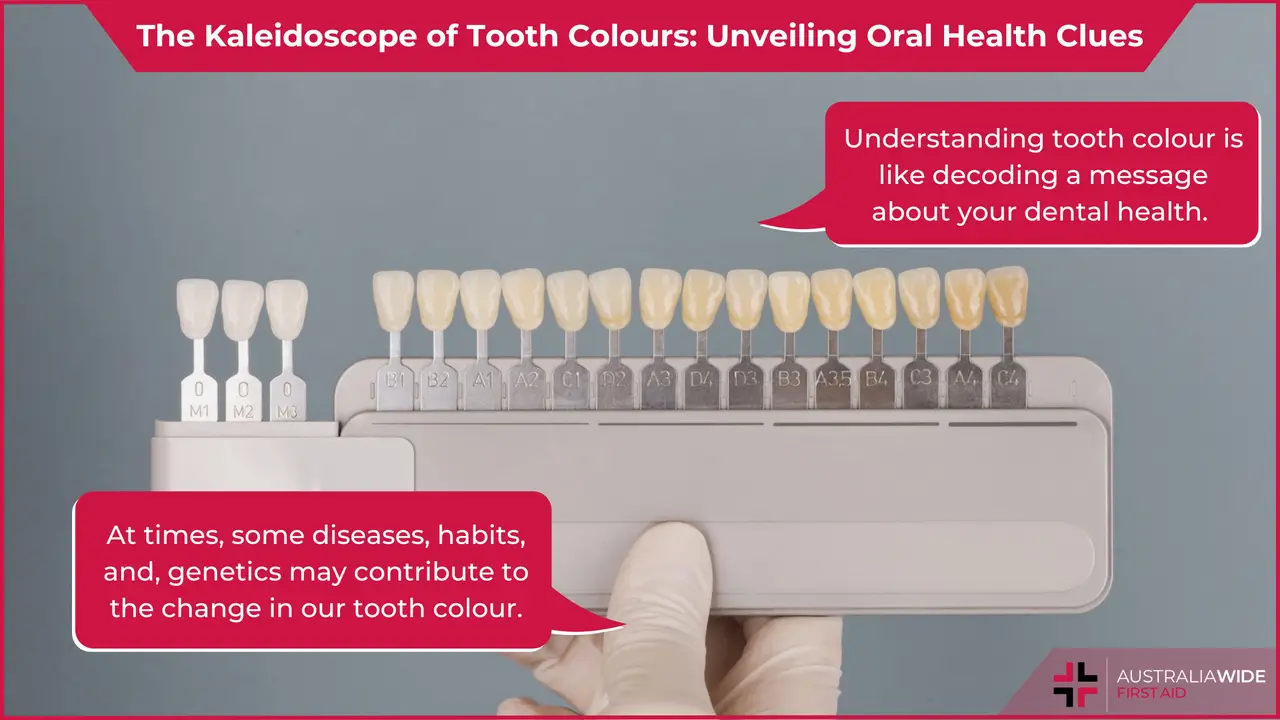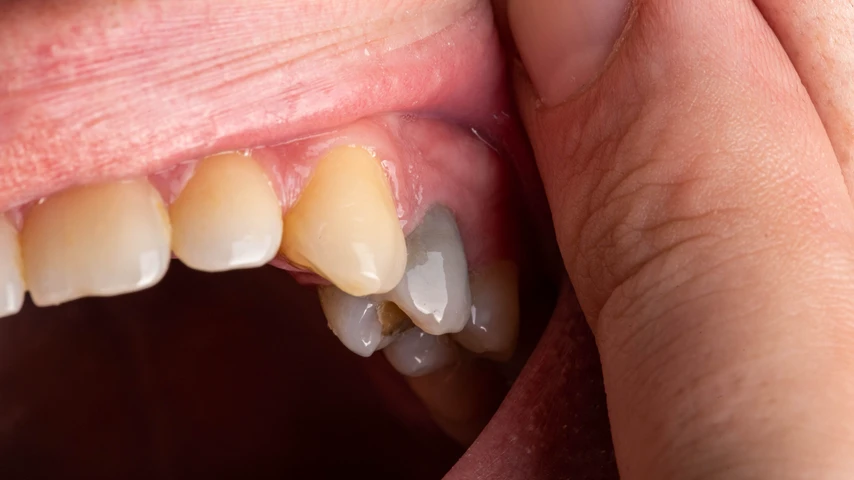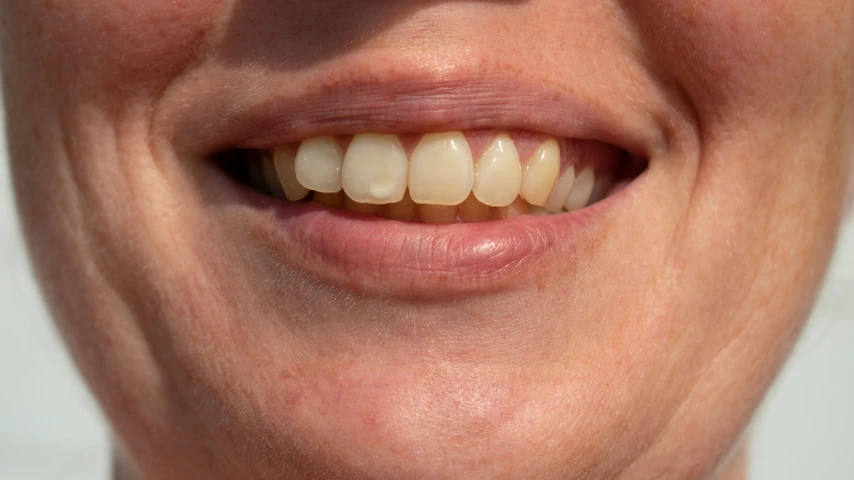Kaleidoscope of Tooth Colours: Unveiling Oral Health Clues


Your smile is a canvas that reflects the journey of your oral health. Just as colours evoke emotions in a painting, the hues of your teeth convey valuable insights about your habits, genetics, and overall well-being.
From the youthful purity of white to the subtle variations brought by time and lifestyle, understanding tooth colour is like decoding a message about your dental health.
In this comprehensive guide, we'll explore the array of tooth shades, unveil their meanings, delve into common causes of discolouration, understand the significance behind each hue, recognize when a dentist's expertise is essential, and discover how dental professionals can restore the brilliance of your smile.
The coveted shade of pearly white teeth signifies optimal oral health. This colour is a reflection of dedicated oral hygiene, a balanced diet, and regular dental care.
These sparkling gems reveal strong enamel and a harmonious oral environment.
However, at times, some diseases, habits, and genetics may contribute to the change in our tooth colour. It is important to note that many people may not have sparkling white teeth and it is normal.
Healthy teeth shade can range from white to yellowish-white.
Yellowing teeth, a common occurrence, can stem from various factors. Age, genetics, and lifestyle choices like tobacco use and frequent consumption of staining foods can contribute to this hue.
While it may not necessarily imply poor health, it's a gentle reminder to maintain consistent oral hygiene and minimize habits that cause staining.

Grey or black teeth can trigger concerns. Grey hues may result from dental trauma or certain medications during tooth development. It can also signal a dead tooth.
A black tooth with dark brown tinges may signal severe decay, bacterial infection, or subpar oral hygiene. Smoking stains can also appear like blacking brown streaks.
Bluish teeth can be an enigma and might indicate inadequate oxygen supply, often linked to health conditions like cyanosis.
Seeking guidance from both a dentist and a medical professional is vital if you observe this unusual discolouration.

White to pitted dull brown spots on teeth may indicate fluorosis, a condition caused by excessive fluoride exposure.
It leads to enamel demineralization and can weaken the structural integrity of the tooth.
Striking the right balance of fluoride is key to preventing this discolouration.
Tetracycline antibiotics if used during tooth development stages, can cause intrinsic staining, manifesting as grey, brown, or greenish hues.
This legacy underscores the importance of prudent antibiotic use, especially during pregnancy and childhood.
Pink teeth might signal internal bleeding within a tooth, often due to dental trauma. Swift dental attention is essential to assess the cause and avert potential complications.
Congenital discolouration, present from birth, can be attributed to factors like genetics or certain medical conditions during tooth development. Addressing such cases necessitates specialized dental care and meticulous evaluation.
If you observe rapid and dramatic shifts in tooth colour, especially without apparent lifestyle changes or dietary habits, consult a dentist. Such changes may hint at underlying health issues demanding attention.
Lingering Stains and Discoloration
Stubborn stains resisting home remedies and diligent oral care warrant a dentist's expertise to restore your teeth's natural colour and radiance.
Discomfort, Sensitivity, or Unusual Symptoms
Changes in tooth colour accompanied by pain, sensitivity, swelling, or unusual symptoms should not be disregarded. They could signify dental problems necessitating swift professional evaluation.
Paediatric Discoloration
For children experiencing atypical tooth colouration, early dental consultation is paramount. Dental experts can diagnose the cause and provide tailored guidance.
Dentists offer meticulous cleanings and scaling, effectively erasing surface stains and rejuvenating your teeth's natural colour.
Teeth Whitening Treatments
For persistent stains and discolouration, dental professionals provide teeth whitening treatments that significantly enhance your smile's brilliance.
Restorative Procedures
Dentists offer an array of restorative treatments, including veneers, crowns, and bonding, to address discolouration stemming from decay, trauma, or enamel erosion.
Cosmetic Dentistry
Complex discolouration like intrinsic staining due to medications or congenital conditions can be addressed through cosmetic dentistry procedures, enhancing both aesthetics and health.
Preventive Guidance and Oral Hygiene
Dentists provide tailored advice on maintaining optimal oral hygiene practices, avoiding habits that lead to staining and safeguarding your teeth's natural colour.
Regular dental check-ups empower you to take control of your oral health. These checks help dentists to detect subtle changes in tooth colour early, effectively preventing potential oral health concerns and complications. In the gallery of oral health, tooth colours are brushstrokes painting a vivid picture of your overall well-being. Whether your smile gleams with the brilliance of white, showcases a mosaic of hues, or blends natural shades, understanding their language is pivotal for maintaining oral health.

March 25, 2025
Explore non-traditional paths to sobriety, including mindfulness, yoga, nutritional therapy, and community-based support, for a personalized approach to recovery.

September 7, 2022
Menopause is the final period, when a woman, trans man, or non-binary person assigned female at birth's ovaries run out of eggs and the body can no longer ovulate. Menopause comes with several symptoms, complications, and treatment options.

July 26, 2024
Transcutaneous Electrical Nerve Stimulation (TENS) is a therapeutic method of pain relief. It utilises an electrical device that emits electrical currents and streams the impulses via electrode patches attached to the skin.